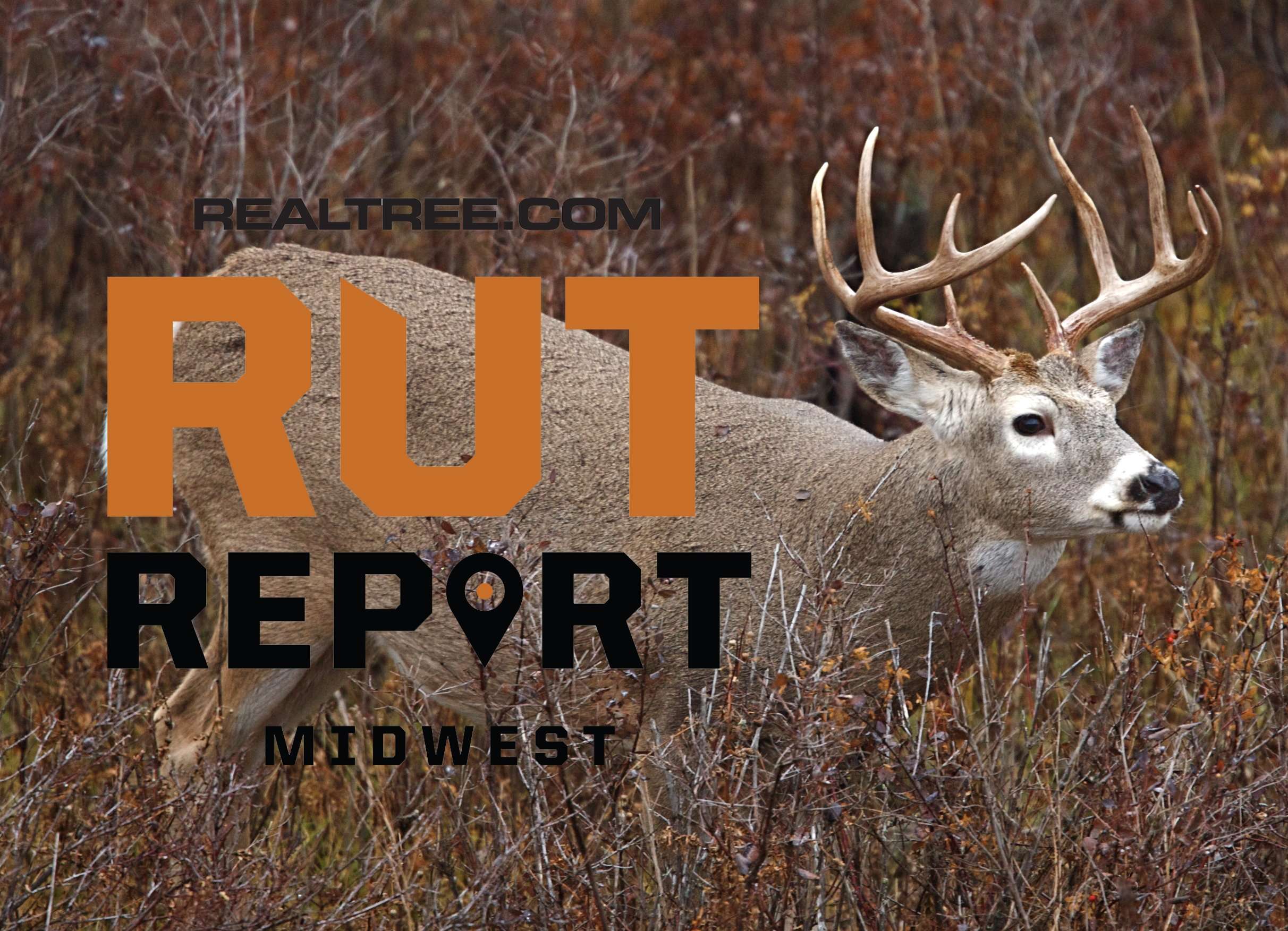While the infamous lockdown phases is here, don’t think bucks aren’t moving. They certainly are

The mid-point of November brings one key point in the midwestern rut — peak breeding. Some hunters refer to this as the “lockdown phase,” because bucks are pairing off with does. It’s true that the bulk of does are entering estrus now. And unless usurped by another male, bucks do spend anywhere from 24 to 48 hours with receptive does.
Realtree contributor Tyler Ridenour is hunting public land in Iowa. “Some cruising and chasing happening,” he said. “A few sightings of bucks locked down with does. For the first part of November, overall rut activity has been far less than a typical year in southern Iowa.”
Another Realtree contributor, Darron McDougal, was in South Dakota last week. “Zero rutting behavior in western South Dakota,” he said. “Saw some mixed lockdown and cruising in central South Dakota. Seems like things are behind and then oddly mixed.”
HuntStand’s Josh Dahlke has been hunting in Minnesota and western Wisconsin. “It’s always amazing to watch the rut unravel in front of your eyes,” he said. “We wait so long for the perfect storm of whitetail hunting, but the action comes and goes faster than bolts of lightning. Of course, the phases within the phases of the rut can be largely pocketed in any given region, depending on the dynamics of the deer herd.
“Where I’ve been spending my tree time in central Minnesota and western Wisconsin, we’ve hit the peak of the rut and lockdown is evident,” he continued. “Yesterday morning and this evening, I saw two different zombie bucks locked on reluctant does, both in odd locations that often come with lockdown. But I’ll keep grinding, because I know that at any given moment, the peak will pour over into another burst of rutty bucks seeking their next fling.”
Nate Hosie with HeadHunters TV has been in Missouri the past several days. “I’m in Missouri now and we’re battling lockdown,” he said. “November can be special, but it has its struggles. Just got to keep the faith, stay the course, and keep putting in the woods hours.”
Phillip Vanderpool with The Legends of the Outdoors is also in Missouri. “I’ve noticed trail cameras have a lot more movement, and I’m starting to see bucks that I haven’t seen before,” he said. “It’s here, and it’s going to break loose soon. All the does are hanging in milo and corn, trying to get away from the bucks. So, think about placing your stand at the edges where they connect to timber strips.”
Nick Gibbs is a diehard deer hunter and real estate agent. He’s in southern Illinois, and the weather has been unseasonably warm. “A lot of the does came in heat around the 8th of November,” Gibbs said. “Morning sits have been very active, while the evening sits are slower. Rattling in the morning early seems to get all the 2- and 3-year-old bucks’ attention while they are still searching for a hot doe.”
Bone Collector cameraman Joshua Moore has been in Indiana. “Definitely chasing hard here in Indiana,” he said. “Young bucks are on their feet, running and looking for does. The mature ones are definitely locked down from what I’ve seen. I’m not seeing much activity on the scrapes at the moment, other than small bucks checking them.”
Personally, even though it’s the “lockdown phase,” I’m seeing some of the best movement of the year on my Indiana trail cameras, including new bucks that just showed up the past couple days.
That said, the Ohio action has trended downward a bit. Therefore, perhaps lockdown is to blame. Also, the rut cycle occurs slightly earlier there, so it might be we’re on the downhill slide of the rut, especially on localized levels.
Fortunately, there’s good news. The lockdown phase can lead to the misconception that deer just aren’t moving (at all). And in some ways, they are moving less. When bucks are bedded with does, mature buck movement decreases. But not all bucks and does form breeding pairs at the exact same time. Does enter estrus in a slightly staggered manner, ranging over several weeks.
Furthermore, recent science suggests that buck-and-doe breeding pairs might not always stay hidden in a tucked-away location for that full 48 hours. The doe still eats, drinks, gets up, runs around, gets chased, and so on. This can lead to more movement and buck visibility from the stand, even if a buck is paired off with an estrus doe. So, keep hunting. Your dream buck might walk through soon.
Don’t Miss: DOES THE MOON ACTUALLY AFFECT DEER?






